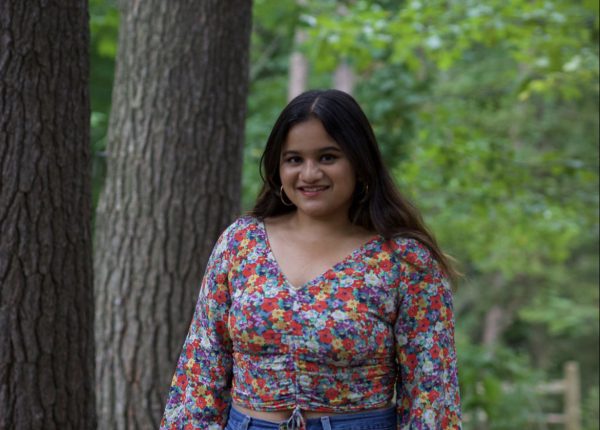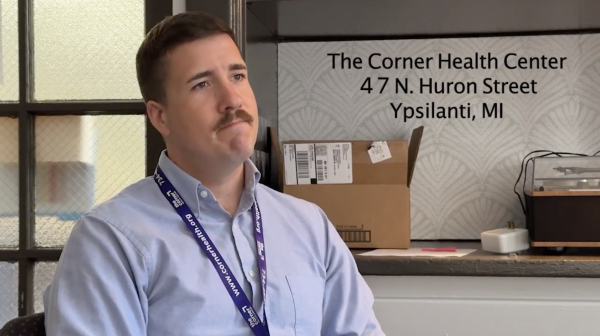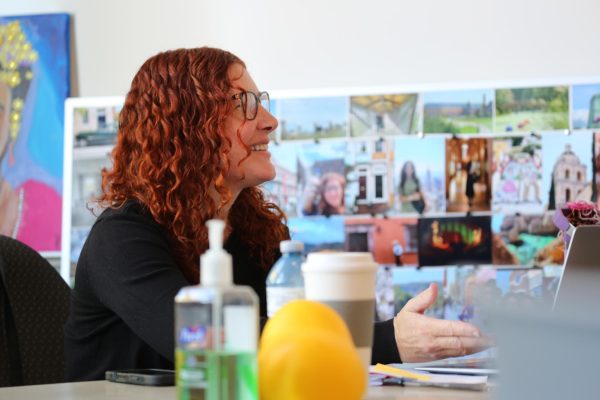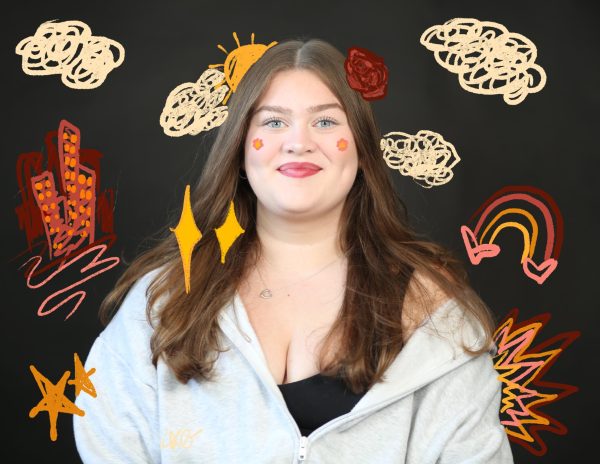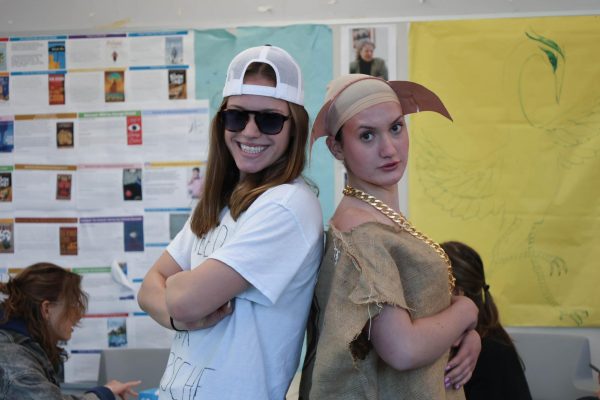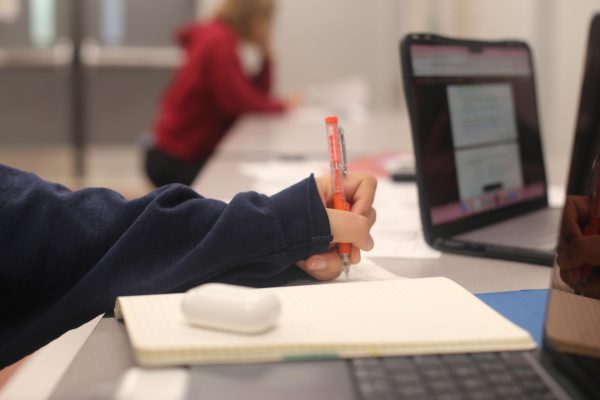26th Annual Exhibition of Art by Michigan Prisoners
This March marked the 26th annual Exhibition of Art by Michigan Prisoners. The exhibition took place from March 22 to April 5 and displayed work from incarcerated people from all 25 of Michigan’s men’s prisons and singular women’s prison, in total showing 714 pieces of work.
The exhibition is put on yearly by the University of Michigan’s Prison Creative Arts Project (PCAP). Sarah Unrath, the arts programing coordinator at PCAP, was thrilled to bring back the exhibition after the COVID-19 pandemic halted the event.
“2019 was our last in-person workshop…,” Unrath said. “…Magically, the clouds parted, and COVID rates were down enough that the MDOC [the Michigan Department of Corrections] allowed the prison creative arts project to be the first volunteer organization back inside the correctional facilities.”
The exhibition was originally started by Janie Paul twenty-six years ago. Paul was married to Buzz Alexander who founded PCAP in 1990.
“They [Paul and Alexander] were working inside correctional facilities and noticed that there was all this art that was existing,” Unrath said. “She was a visual artist who really wanted to bring the artwork outside the prison walls to create a larger discussion within the public sphere about mass incarceration and about the shared humanity of the people inside.”
Unrath joined PCAP in 2010 due to an outreach requirement for her degree. It was her first time being part of the PCAP community and changed the course of her life and career forever.
“I became more fully human through the process of meeting people inside, hearing their stories and acknowledging exactly what the exhibition is meant to do, to share humanity between us,” Unrath said.“I was able to relate to them in ways that I never expected myself to relate to someone whose society placed an identity on them as prisoner or convict or inmate.”
Unrath’s position as Art Coordinator for PCAP entails the initial part of the exhibition process – selection trips. Selection trips are open to anyone who is a part of the PCAP community from students to volunteers led by two curators. Under normal circumstances, selection trips would call for speaking with the artists as well.
“Selection trips are really key to meet the artists and hear their concepts behind the art,” Unrath said.
A call for art goes up every year around the end of June to those who have participated previously and to the special activities directors at each correctional facility. Curators look for innovation, originality and what they call “inspired work.”
“We’re looking for pieces that are unique…,” Unrath said. “…We’re not looking for artwork that is very commercial, or doesn’t have edits. Sometimes that’s really hard to navigate because it might not look inspiring, but it is when you speak to the artists.”
This year, due to COVID, the selection trips were different from the past and limited contact with the artists due to the rise in the Omicron variant. The art curators were not able to meet or speak with all of the artists that contributed, unlike past years. Nevertheless, PCAP was still able to display artwork from all 26 correctional facilities and display works from 392 participants this year.
Participants emerge from the exhibition with a newfound identity and a community. Subsequent to partaking and creating art while incarcerated, participants often start to identify themselves as artists within the correctional facility which leads to the creation of a community.
“Artists will share with each other and mentor each other and sometimes we have artists who sell their work for higher amounts and purchase art supplies for others,” Unrath said. “Once you’re an artist and once you identify as an artist and start getting mentorships from people it really opens up a lot of connecting with others in a way that I don’t necessarily know if those connections are available to just the general public inside prison.”
Purchasing supplies is an obstacle that many of the inmates have to overcome in order to achieve their art. PCAP is not able to supply materials, therefore the inmates have to supply themselves. Many of them have jobs within correctional facilities with a salary of 18 cents per day – fending for a tube of paint worth eight dollars forces them to be very resourceful.
“We have some curators that have experienced being inside for significant amounts of years and they would always tell us about how they would scrape out each drop of paint from like the lid, like the cap, or they would water down their paint in order to make it go farther.” Unrath said.
PCAP or the commission cannot provide materials because they do not profit off of the exhibition at all. PCAP is funded through grants, donors, businesses and brands like the Michigan Council for the Arts. The University of Michigan doesn’t fund the exhibition — only the salaries of the people who work for it.
“It’s horrible business models but it’s wonderful,” Unrath said. “It’s really the root of PCAP is that we believe that the artists should be compensated for their work and that we as an organization shouldn’t be benefiting from their artwork now.”
The artists are able to determine the price of their own artwork if they choose to put it up for sale. PCAP helps guide them through what to price if they ask for the help and have a specific graph for the process. Ultimately they are the ones who decide the price.
“When something sells at the show, the artists will get 100% of their asking price,” Unrath said.
PCAP continues to provide for incarcerated inmates after they leave the correctional facility.
“Once they return home and are released, we also continue to support them through what is called the linkage project,” Unrath said.“And once people become part of our linkage community, we provide them with opportunities for artistic growth and development.”
The linkage program is a crucial part in helping the formerly incarcerated people but also connecting them with working artists across the state and have partnered with other organizations in the past.
If viewers aren’t able to financially support artists by purchasing, there are other ways to get in contact or help the artists. Throughout the exhibit there were green and red labels on each piece of art that symbolize different things. Red indicated the pieces that had been sold but green indicated an opportunity. An opportunity to write to the artists and for them to receive communication from the “free world.” Unrath encourages people to write to not only masterpiece artists but also the beginner ones, because kind words go a long way.
One current curator who is also a formerly incarcerated artist has saved every letter they got written by visitors from the art exhibition even as he is free.
“He still has them and because they’ve meant so much to him,” Unrath said.
PCAP is still working towards the goal of getting 100% of the artists at least one letter from the free world. If you’d like to write a letter to an incarcerated artist visit this link.
Unrath knows that in our society, humanity is often stripped from an incarcerated person and how the issue of mass incarceration has plagued this country. How American history is intertwined with mass incarceration often affects some groups more than others.
“We have a deeply rooted issue of race in our country. And undeniably that people of color are locked up at a disproportionate rate to our general population,” Unrath said.
There is no one reason why our society deems incarcerated people less human, Unrath hypothesizes it has something to do with numbers.
“We can denote them literally to a number which is what they do. So we don’t have to view them as human and the more that you can view someone as not being human, the more you are able to live with yourself for doing whatever you decide to do to other people,” Unrath said.
Nonetheless these people are artists with a shared humanity who create with a purpose.
Taking some time out of your day to write a letter can mean more than imaginable to an incarcerated artist, it can keep them going, it can make them feel seen and be heard.
“Those words mean the world to the artists and it’s what can keep them going. But it also lets them know that their world or their art is now existing and living outside of the walls that they’re not able to, and that is also really powerful,” Unrath said.
